Introduction
Hyderabad, Pakistan, is a city steeped in a tapestry of culture, history, and culinary delights. Nestled in the southern province of Sindh, this vibrant city is renowned not only for its historical significance but also for its captivating cuisine. When it comes to food in Hyderabad, the city boasts an illustrious culinary heritage that reflects a fusion of influences, offering a myriad of flavors that tantalize the taste buds.
The rich history of Hyderabad intertwines with its food culture, mirroring the narratives of conquests, trade routes, and diverse cultural exchanges. Influences from the Mughal era and Persian traditions have seamlessly blended with indigenous Sindhi cuisine, resulting in a gastronomic journey that showcases an array of aromatic spices, tantalizing aromas, and a symphony of flavors unique to this region.
The essence of food in Hyderabad lies not just in its diverse offerings but also in the way each dish tells a story—a story of tradition, family, and celebration. From the iconic Sindhi Biryani, a delectable harmony of fragrant rice, succulent meat, and aromatic spices, to the tantalizing flavors of Chapli Kebab, the culinary landscape in Hyderabad is a treasure trove waiting to be explored.
The streets of Hyderabad beckon with a plethora of savory and sweet delights. A stroll through the bustling markets unveils an enticing world of street food stalls offering an assortment of delectable treats such as Saji, an aromatic slow-cooked whole lamb or goat, and the mouthwatering Aloo Palak, a simple yet flavorsome spinach and potato dish.
Whether exploring the city’s renowned eateries or savoring the local street fare, the food in Hyderabad promises a gastronomic adventure like no other. Each dish embodies centuries of tradition, culture, and passion, inviting both locals and visitors alike to indulge in an unforgettable culinary experience that captures the heart and soul of Hyderabad, Pakistan.
List of Food in Hyderabad
| S. No | Name of Food/Dish | Category | Price Range (USD & EUR) | Main Ingredients (if available) |
|---|---|---|---|---|
| 1 | Sindhi Biryani | Savory | $8-$15 USD, €7-€13 EUR | Rice, Meat, Spices |
| 2 | Sindhi Saag | Veg Dish | $5-$10 USD, €4-€8 EUR | Spinach, Mustard Greens, Spices |
| 3 | Sindhi Kadhi | Veg Dish | $6-$12 USD, €5-€10 EUR | Gram Flour, Vegetables, Spices |
| 4 | Dal Pakwan | Savory | $4-$8 USD, €3-€7 EUR | Lentils, Fried Bread |
| 5 | Sindhi Kadi | Veg Dish | $5-$10 USD, €4-€8 EUR | Yogurt, Gram Flour, Vegetables |
| 6 | Koki | Veg Dish | $3-$7 USD, €2-€6 EUR | Wheat Flour, Ghee, Spices |
| 7 | Sindhi Palla Fish | Seafood | $10-$20 USD, €8-€16 EUR | Fish, Spices |
| 8 | Kachori | Savory | $2-$5 USD, €2-€4 EUR | Flour, Lentils, Spices |
| 9 | Bun Kabab | Meat Dish | $3-$8 USD, €2-€7 EUR | Bun, Spiced Meat Patty |
| 10 | Dahi Baray | Savory | $4-$9 USD, €3-€8 EUR | Lentil Balls, Yogurt, Spices |
| 11 | Chana Chaat | Savory | $3-$7 USD, €2-€6 EUR | Chickpeas, Spices, Chutneys |
| 12 | Aloo Tikki | Veg Dish | $2-$6 USD, €2-€5 EUR | Potatoes, Spices |
| 13 | Gol Gappay | Savory | $3-$6 USD, €2-€5 EUR | Hollow Crispy Shells, Fillings |
| 14 | Chicken Karahi | Meat Dish | $8-$18 USD, €7-€15 EUR | Chicken, Spices |
| 15 | Bheja Fry | Meat Dish | $10-$25 USD, €8-€20 EUR | Brain, Spices |
| 16 | Saag Gosht | Meat Dish | $9-$20 USD, €7-€17 EUR | Meat, Spinach, Spices |
| 17 | Nihari | Meat Dish | $10-$22 USD, €8-€18 EUR | Meat, Spices |
| 18 | Chapli Kebab | Meat Dish | $6-$15 USD, €5-€13 EUR | Ground Meat, Spices |
| 19 | Saji | Meat Dish | $12-$30 USD, €10-€25 EUR | Lamb, Spices |
| 20 | Kofta | Meat Dish | $7-$15 USD, €6-€13 EUR | Meatballs, Spices |
| 21 | Seekh Kebab | Meat Dish | $5-$12 USD, €4-€10 EUR | Skewered Meat, Spices |
| 22 | Bihari Boti | Meat Dish | $8-$18 USD, €7-€15 EUR | Marinated Meat Chunks, Spices |
| 23 | Aloo Palak | Veg Dish | $5-$11 USD, €4-€9 EUR | Potatoes, Spinach, Spices |
| 24 | Chicken Handi | Meat Dish | $9-$20 USD, €7-€17 EUR | Chicken, Spices |
| 25 | Fish Curry | Seafood | $10-$22 USD, €8-€18 EUR | Fish, Spices |
| 26 | Mutton Pulao | Meat Dish | $12-$25 USD, €10-€20 EUR | Mutton, Rice, Spices |
| 27 | Aloo Paratha | Veg Dish | $3-$8 USD, €2-€7 EUR | Wheat Bread, Potatoes, Spices |
| 28 | Baida Roti | Savory | $4-$9 USD, €3-€8 EUR | Stuffed Bread, Eggs, Spices |
| 29 | Chicken Shawarma | Meat Dish | $6-$12 USD, €5-€10 EUR | Chicken, Pita, Garlic Sauce |
| 30 | Mutton Karahi | Meat Dish | $10-$20 USD, €8-€16 EUR | Mutton, Spices |
| S. No | Name of Food/Dish | Category | Price Range (USD & EUR) | Main Ingredients (if available) |
Note: The price range provided is approximate and may vary depending on the restaurant or vendor.
Sindhi Biryani: A quintessential Sindhi dish, Sindhi Biryani is a flavorful rice dish cooked with aromatic spices, meat (usually beef or mutton), and potatoes. The rice is infused with saffron, giving it a rich color and enticing aroma. It’s slow-cooked, allowing the flavors to meld perfectly, resulting in a hearty and fragrant meal that encapsulates the essence of Sindhi cuisine.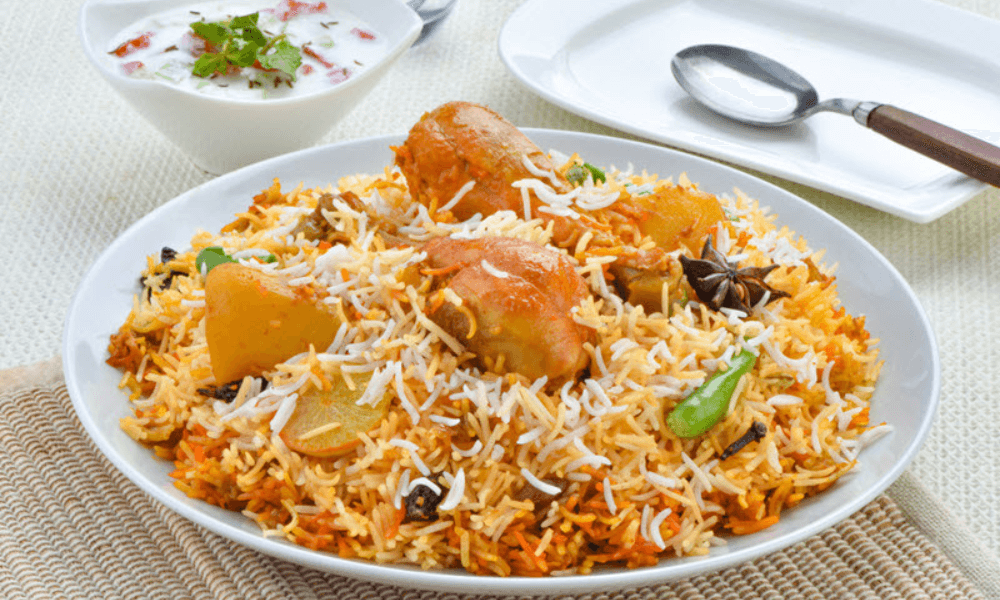
Sindhi Saag: Sindhi Saag is a vibrant and nutritious dish made from a blend of leafy greens, particularly spinach and mustard greens (saag), cooked with assorted spices. The greens are simmered to a tender consistency, creating a thick and flavorful gravy that is often enjoyed with flatbreads like roti or rice. It’s a wholesome and healthy dish packed with vitamins and robust flavors.
Dal Pakwan: A popular Sindhi breakfast item, Dal Pakwan comprises crispy deep-fried bread (pakwan) served with a flavorful lentil curry (dal). The dal is prepared with a mix of lentils, seasoned with spices like cumin, turmeric, and red chili powder, creating a comforting and savory accompaniment to the crunchy pakwan.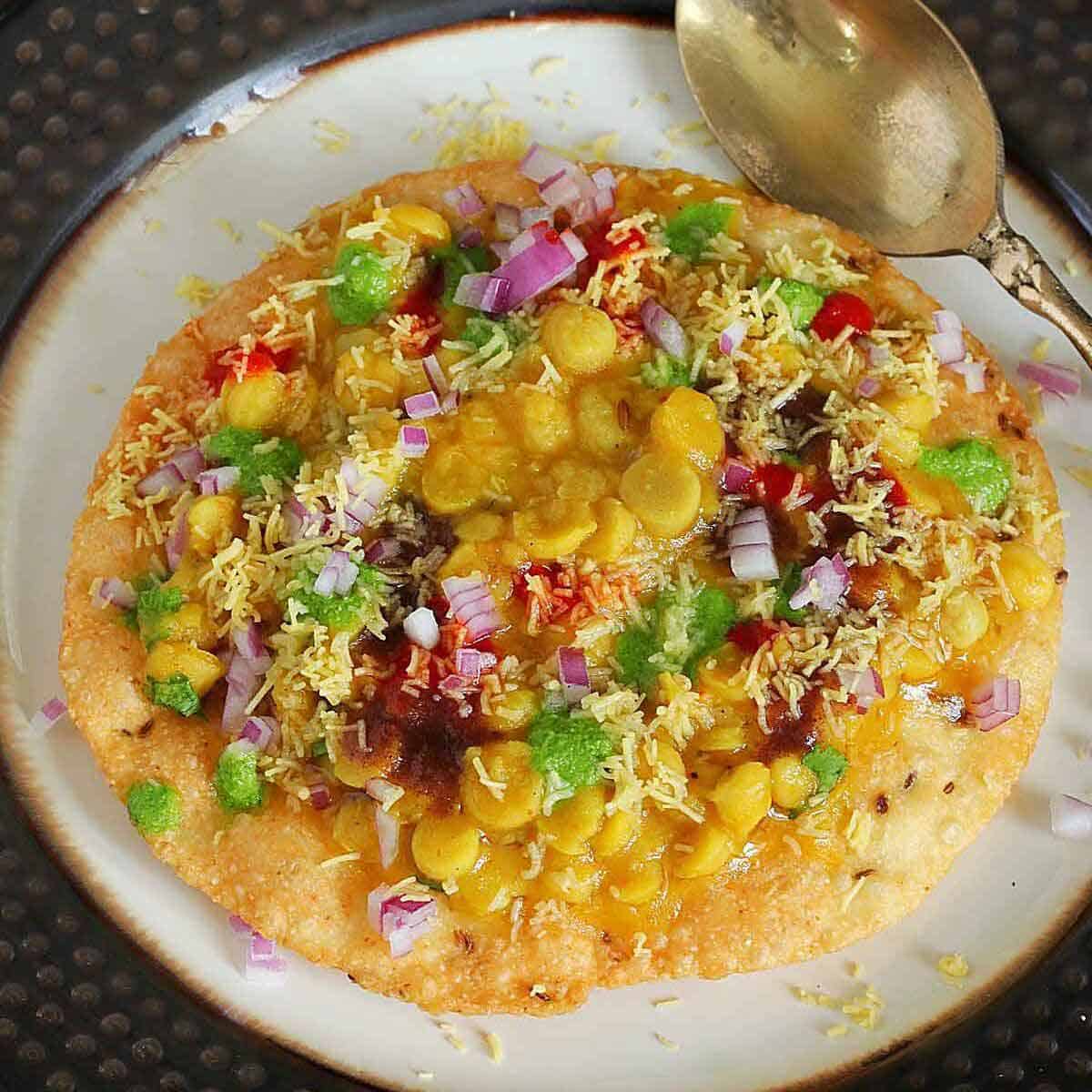
Koki: Koki is a traditional Sindhi flatbread made with whole wheat flour, finely chopped onions, green chilies, coriander, and a blend of spices. The dough is rolled out into thick rounds and cooked on a griddle with ghee or oil until it turns golden and crispy. It’s usually enjoyed with yogurt or pickles, offering a delightful combination of textures and flavors.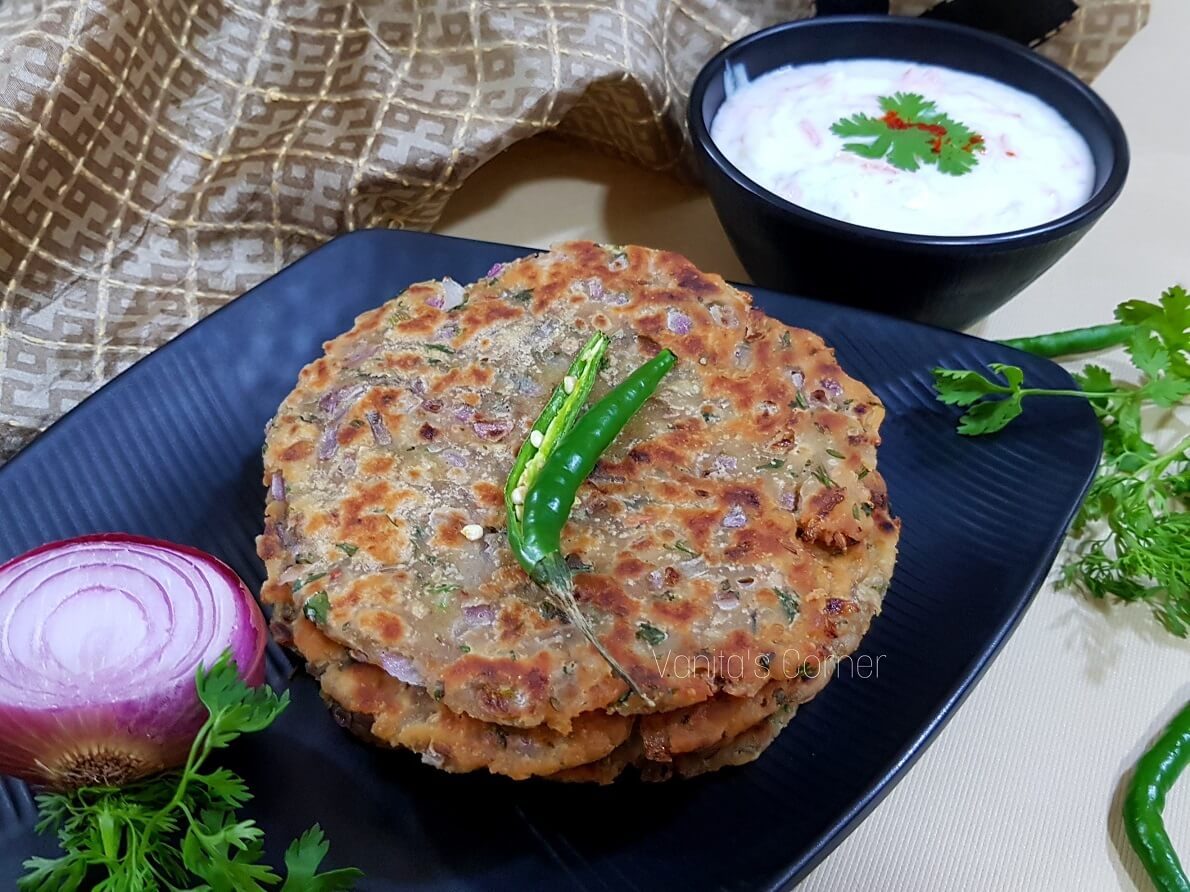
Sindhi Palla Fish: This dish features freshwater fish (Palla fish) native to the rivers of Sindh. The fish is marinated in a mixture of spices and then fried until golden and crispy. It’s often served with a side of lemon wedges and fresh green chutney, showcasing the freshness of the fish and the vibrant flavors of the spices.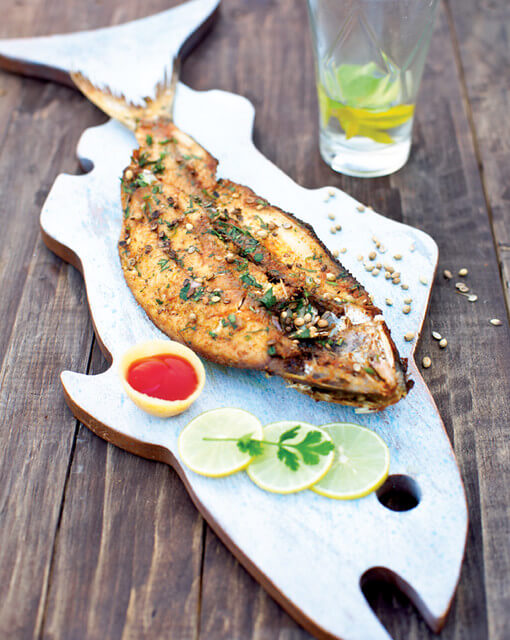
Kachori: Kachori is a deep-fried pastry filled with a savory mixture of spiced lentils or peas. The outer shell is made from flour and is crisp and flaky. Kachori is usually enjoyed as a snack or part of a meal, often accompanied by tamarind or mint chutney for an extra burst of flavor.
Bun Kabab: A popular street food item, Bun Kabab consists of a spiced meat patty served in a soft bun, often garnished with sliced onions, tomatoes, and chutneys. The kabab is typically made with minced meat mixed with various spices, grilled or shallow-fried to perfection, offering a flavorful and satisfying experience in every bite.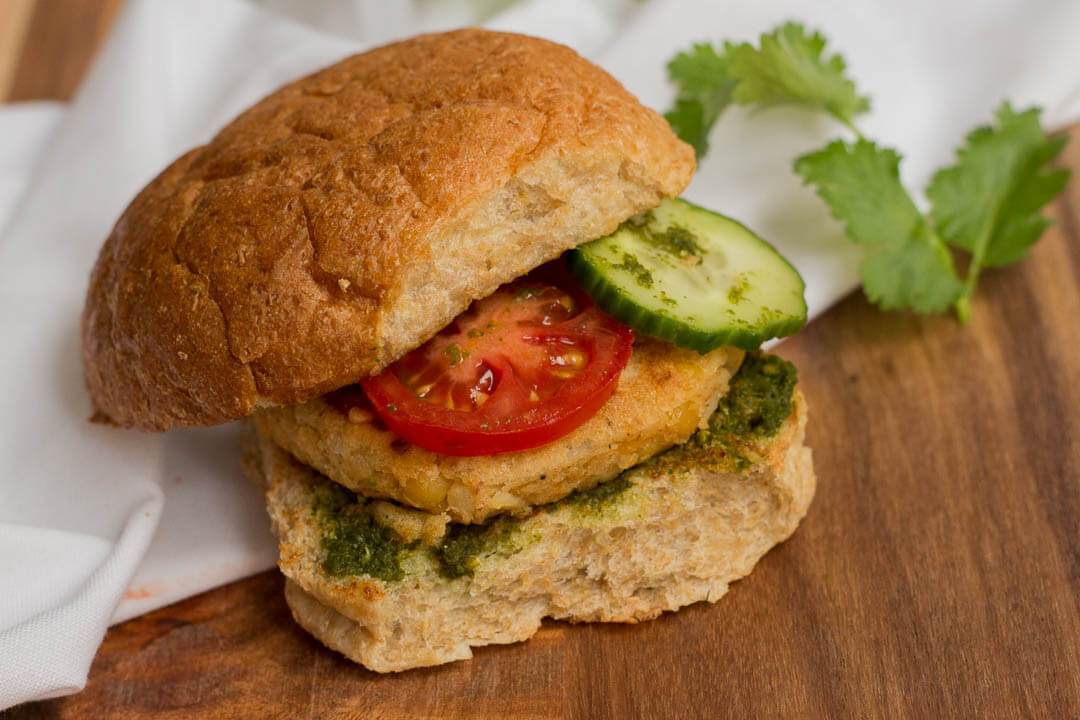
Dahi Baray: Dahi Baray comprises lentil or gram flour dumplings soaked in creamy yogurt, seasoned with a blend of spices such as cumin, chili powder, and chaat masala. It’s a refreshing and tangy dish commonly enjoyed as a snack or appetizer, perfect for balancing out the spicier flavors of other dishes.
Chana Chaat: Chana Chaat is a zesty chickpea salad mixed with chopped onions, tomatoes, green chilies, and various spices. It’s garnished with fresh coriander leaves and a drizzle of tamarind or mint chutney, offering a delightful explosion of flavors and textures.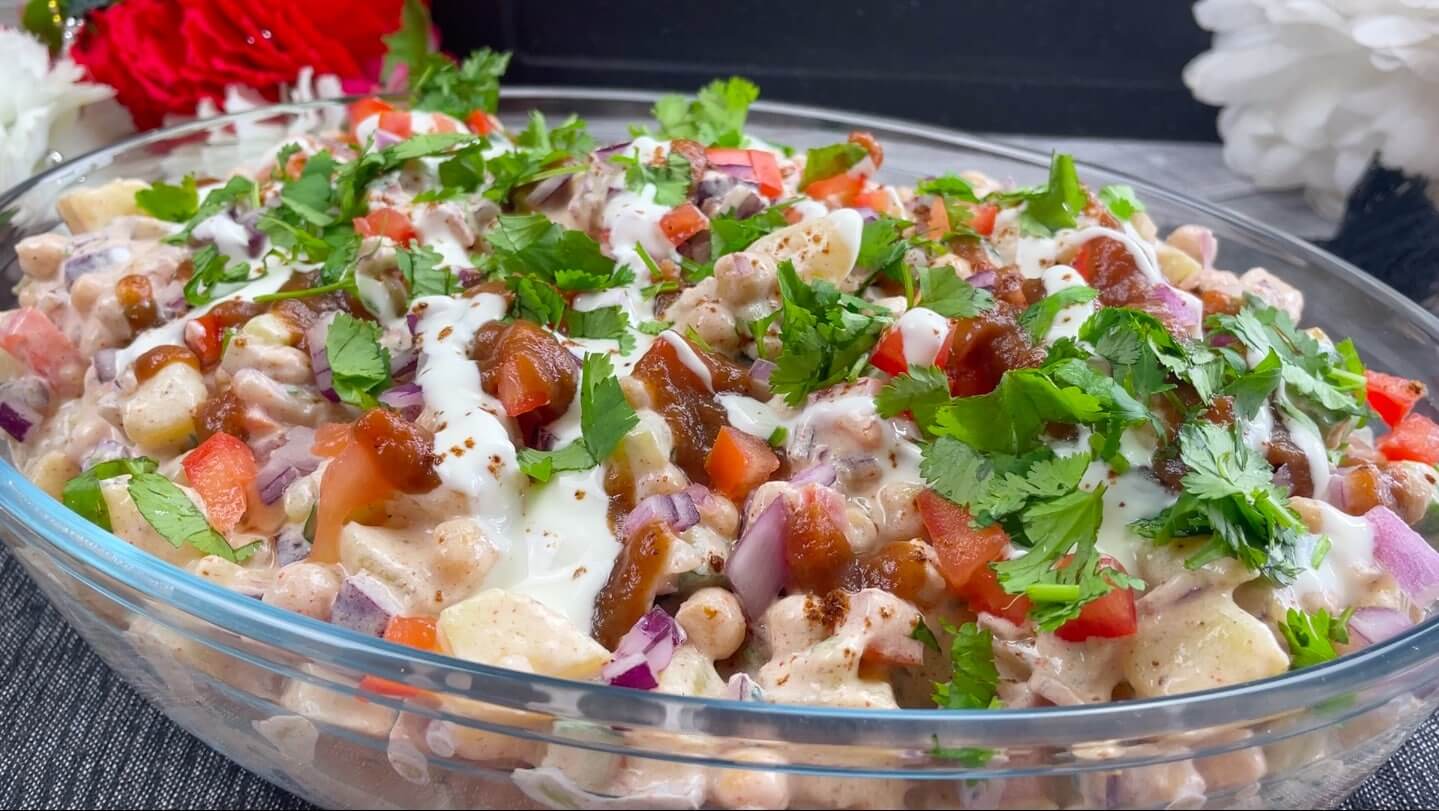
Aloo Tikki: Aloo Tikki consists of mashed potatoes mixed with spices like cumin, coriander, and red chili powder, shaped into patties, and shallow-fried until golden and crispy. It’s a popular street food snack, often served with tamarind chutney or yogurt, topped with chopped onions and chaat masala for added flavor.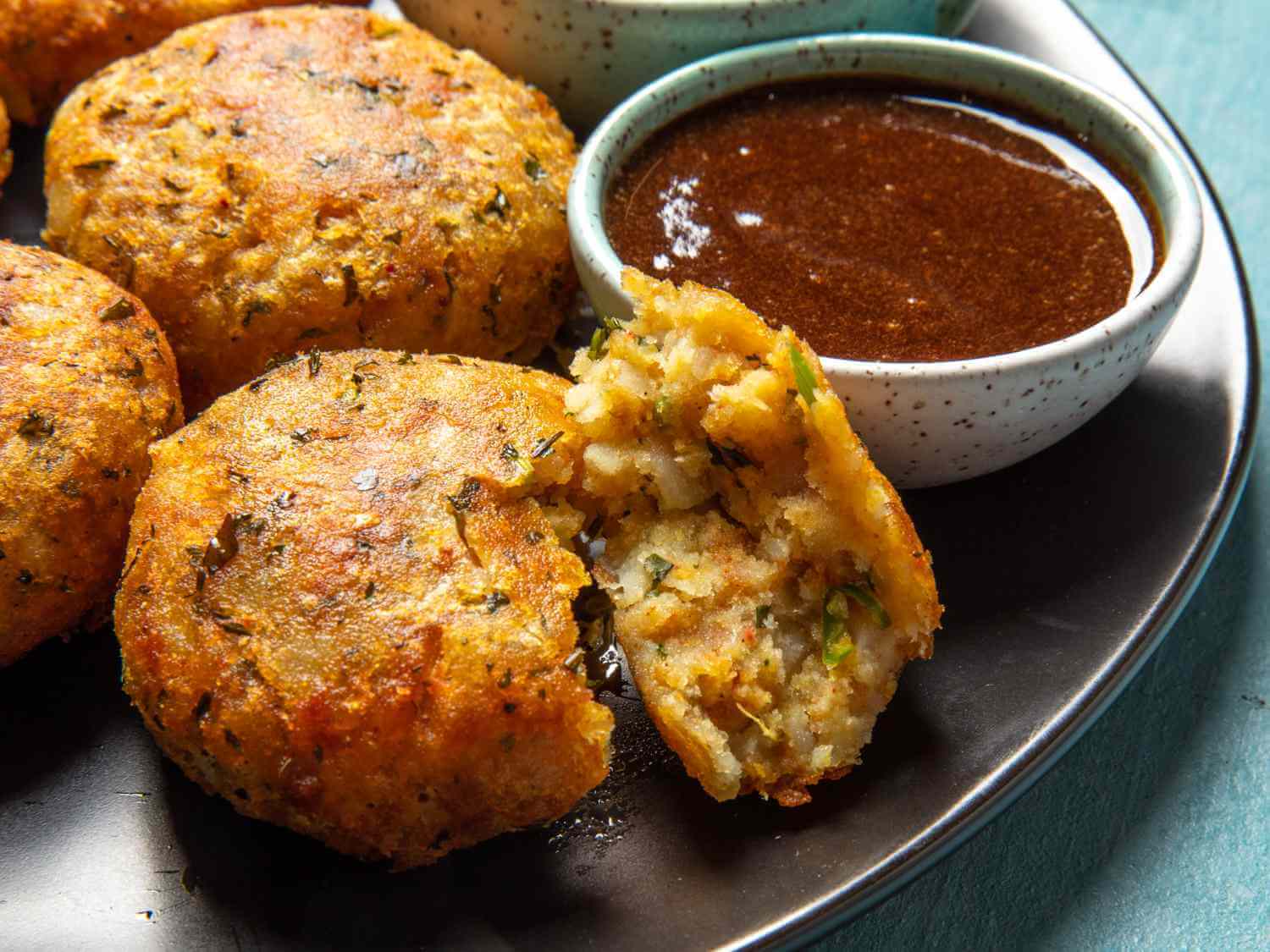
Gol Gappay: Also known as Pani Puri, Gol Gappay is a popular street food snack comprising hollow, crispy shells filled with a spicy and tangy mixture of tamarind water, chickpeas, potatoes, and spices. These bite-sized delights offer a burst of flavors and are a favorite among food enthusiasts.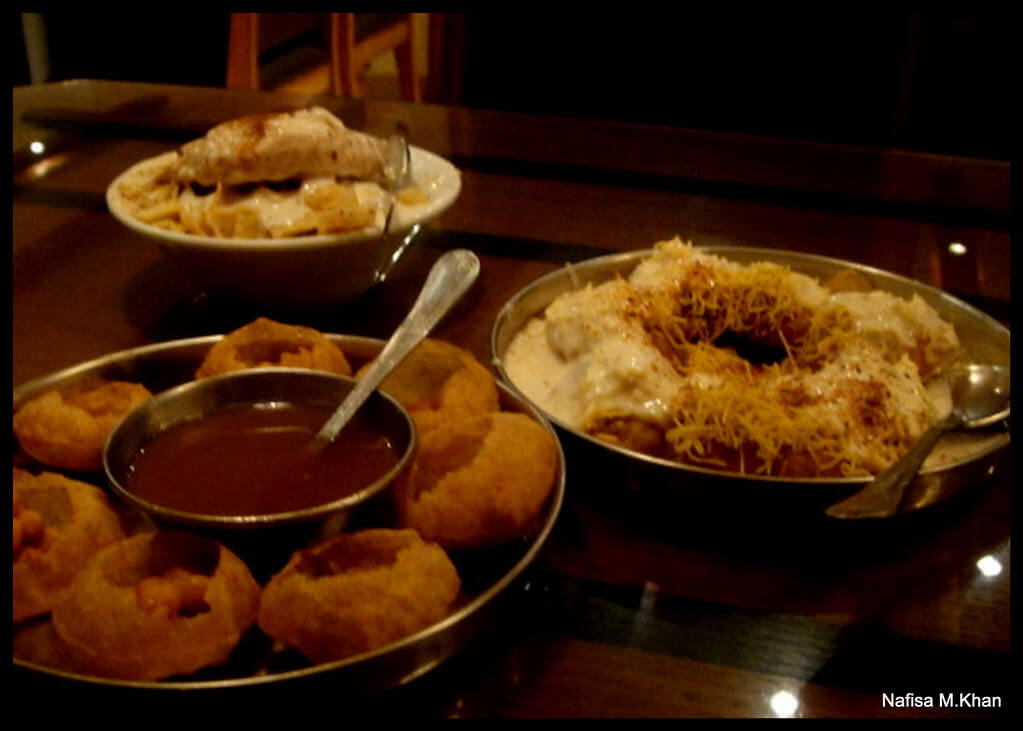
Chicken Karahi: Chicken Karahi is a spicy and aromatic chicken dish cooked in a karahi (a type of cooking vessel). It features chicken pieces simmered in a rich tomato-based gravy with a blend of spices such as ginger, garlic, cumin, and coriander, resulting in a flavorful and comforting dish.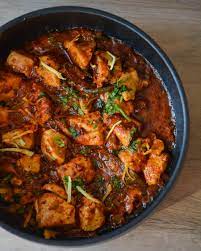
Bheja Fry: Bheja Fry is a dish made with lamb or goat brain, cooked with onions, tomatoes, and a medley of spices like cumin, turmeric, and red chili powder. The brains are sautéed until tender and flavorful, offering a unique and rich taste experience for those inclined toward adventurous eating.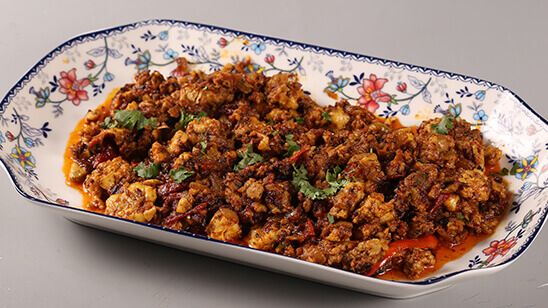
Saag Gosht: Saag Gosht is a hearty and wholesome meat dish prepared with a combination of tender meat (commonly lamb or mutton) and leafy greens like spinach or mustard greens. The meat is simmered with the greens and a blend of spices until it’s succulent and infused with the earthy flavors of the greens.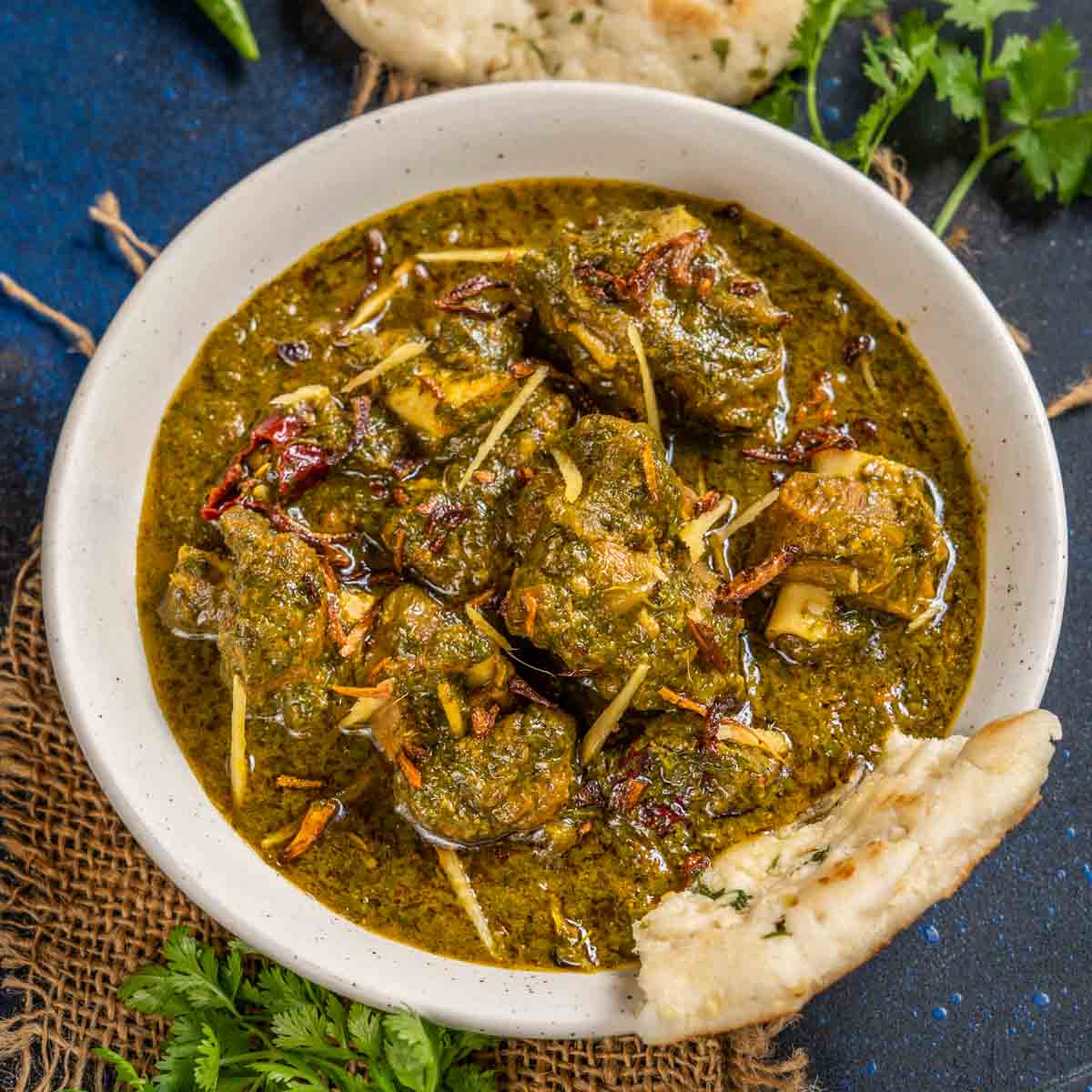
Nihari: Nihari is a slow-cooked stew made with tender meat, often beef or mutton, simmered in a rich and flavorful gravy. It’s prepared with a combination of spices, including cloves, cardamom, cinnamon, and bay leaves, resulting in a robust and aromatic dish often served with naan or rice for a satisfying meal.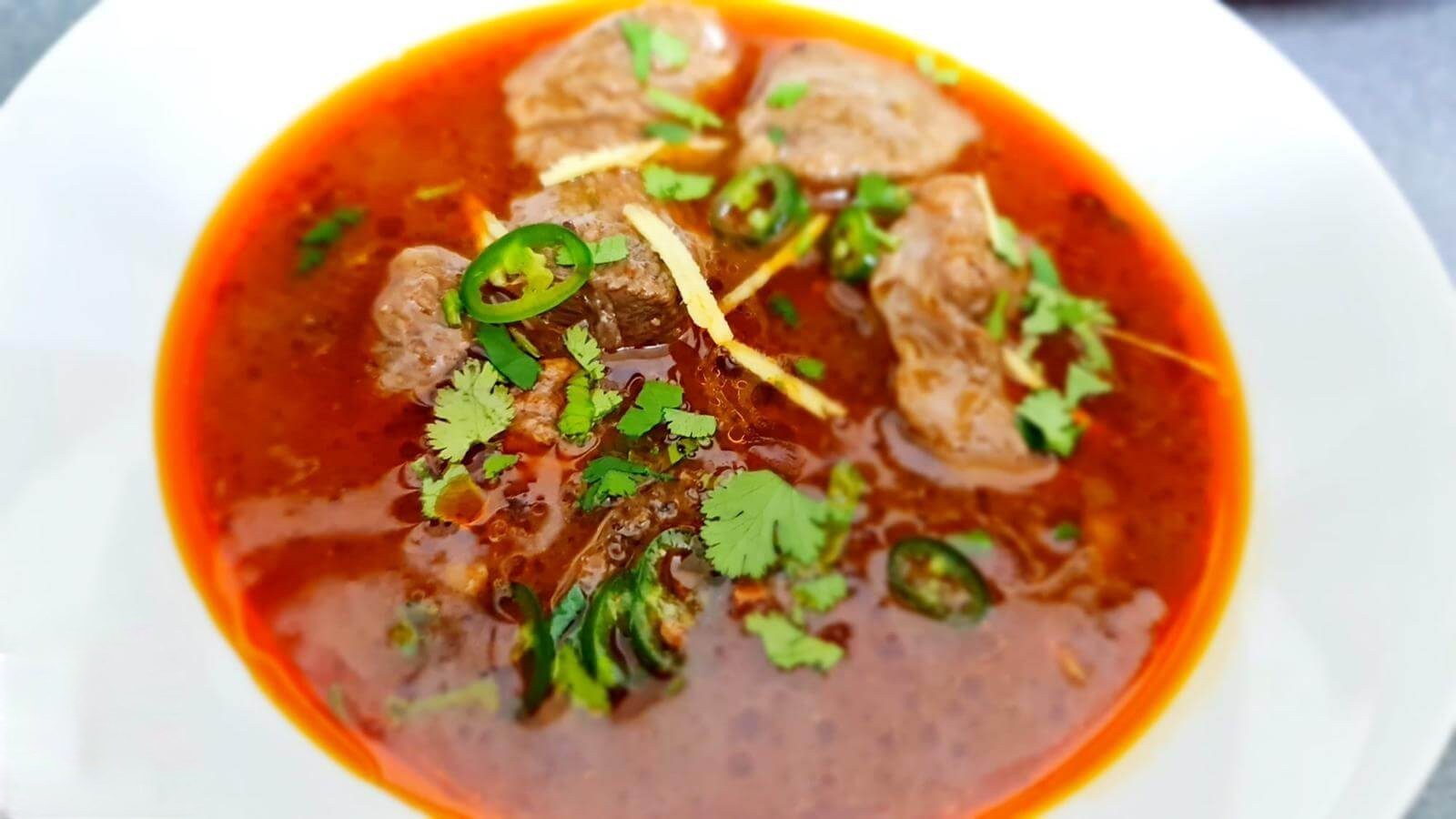
Chapli Kebab: Chapli Kebab is a flavorful minced meat patty dish originating from the Pashtun regions of Pakistan. It’s made with minced meat (commonly beef or lamb) mixed with various spices such as coriander, cumin, chili powder, and tomatoes. The mixture is shaped into round patties and shallow-fried until golden and crispy, resulting in a tender and aromatic kebab, often served with naan or rice.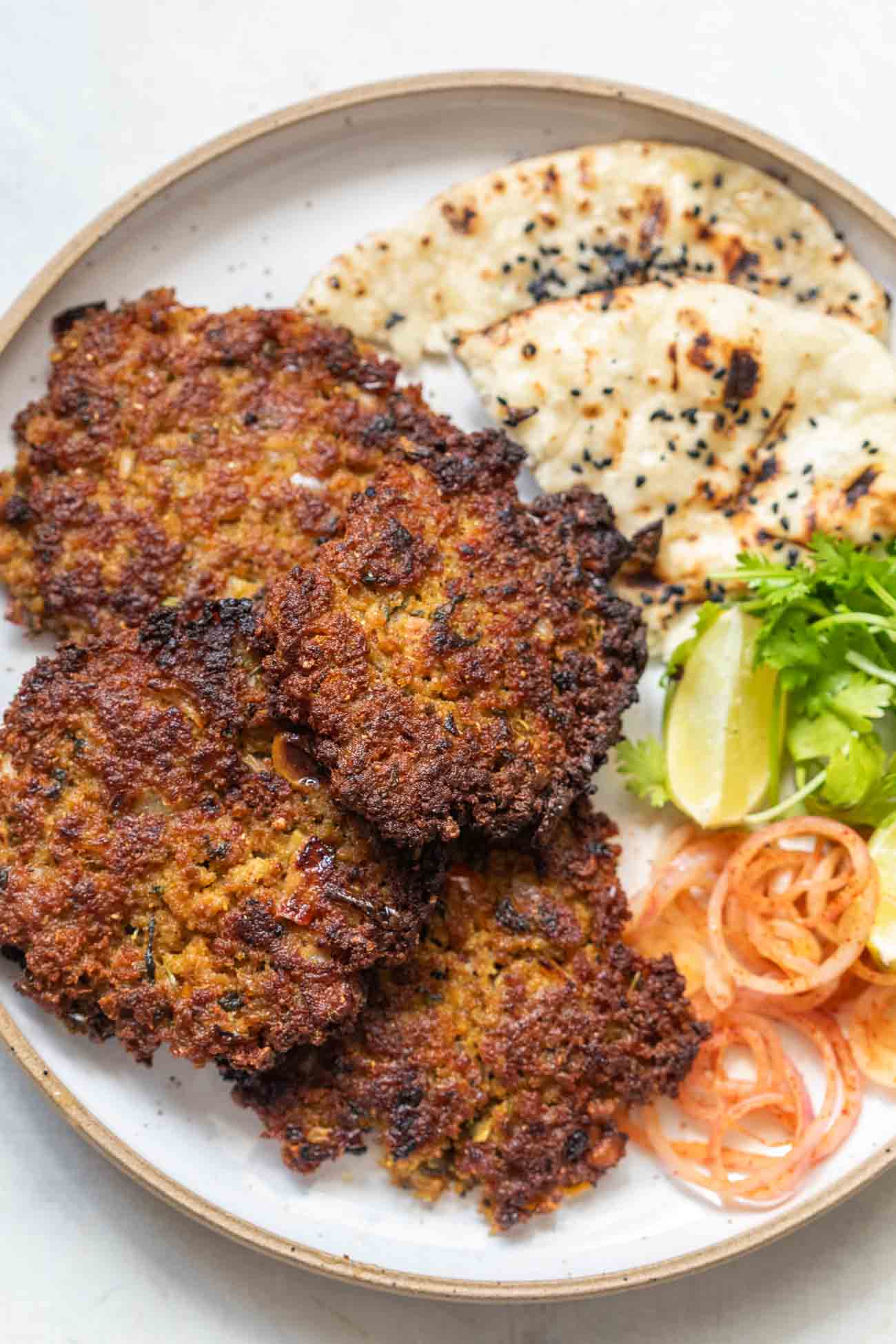
Saji: Saji is a traditional meat dish originating from Balochistan, Pakistan, particularly popular in Hyderabad. It’s prepared by slow-cooking whole lamb or goat over an open fire or in an underground pit. The meat is marinated with a blend of spices like salt, black pepper, and papaya paste, resulting in succulent and tender meat that’s rich in flavor and often served during festive occasions or gatherings.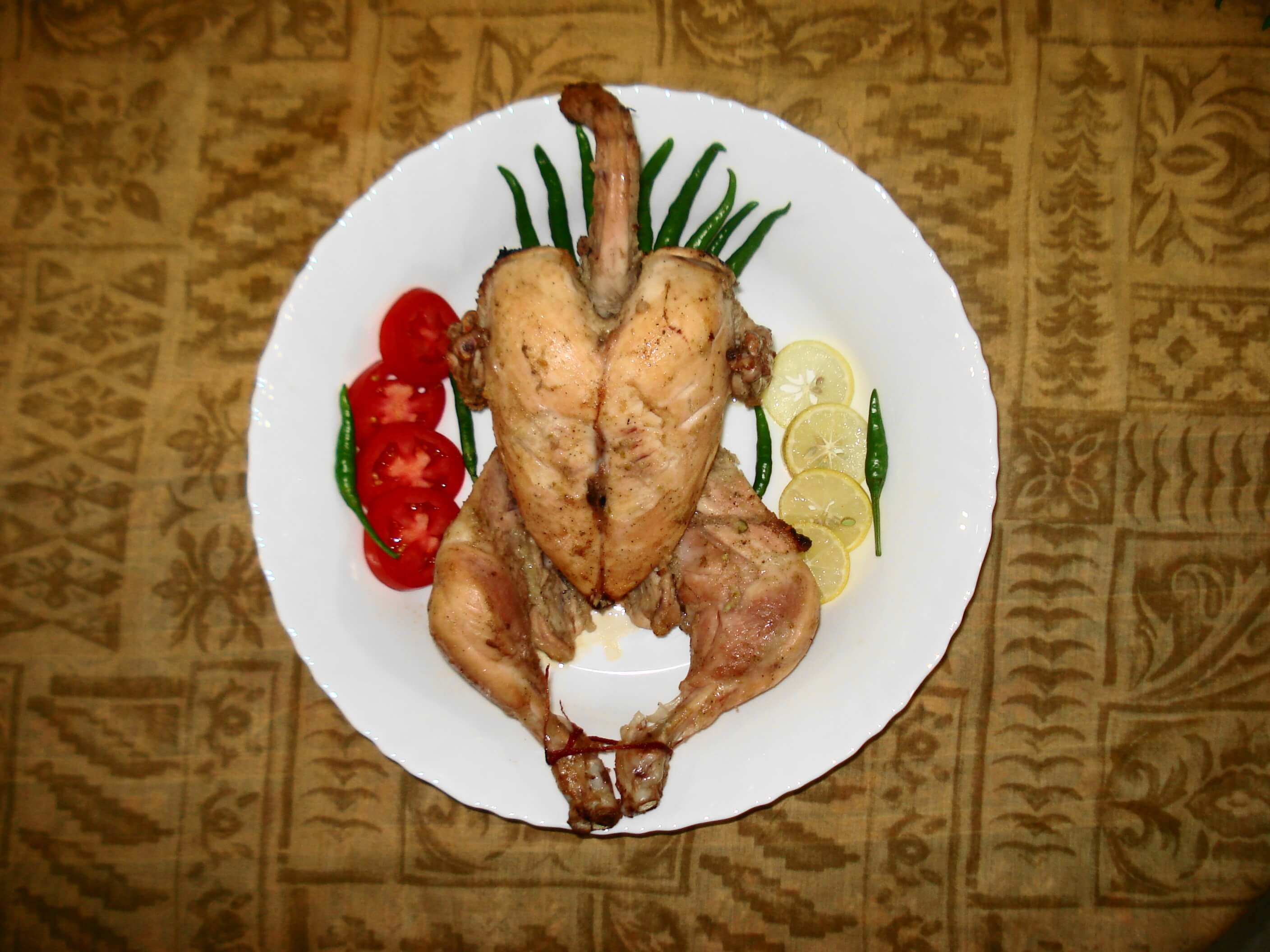
Kofta: Kofta refers to seasoned meatballs made from minced meat (beef, lamb, or chicken) mixed with spices, onions, and fresh herbs such as cilantro and mint. These meatballs are typically simmered in a flavorful gravy made from tomatoes, onions, yogurt, and a blend of spices, creating a delicious and hearty dish often paired with rice or naan.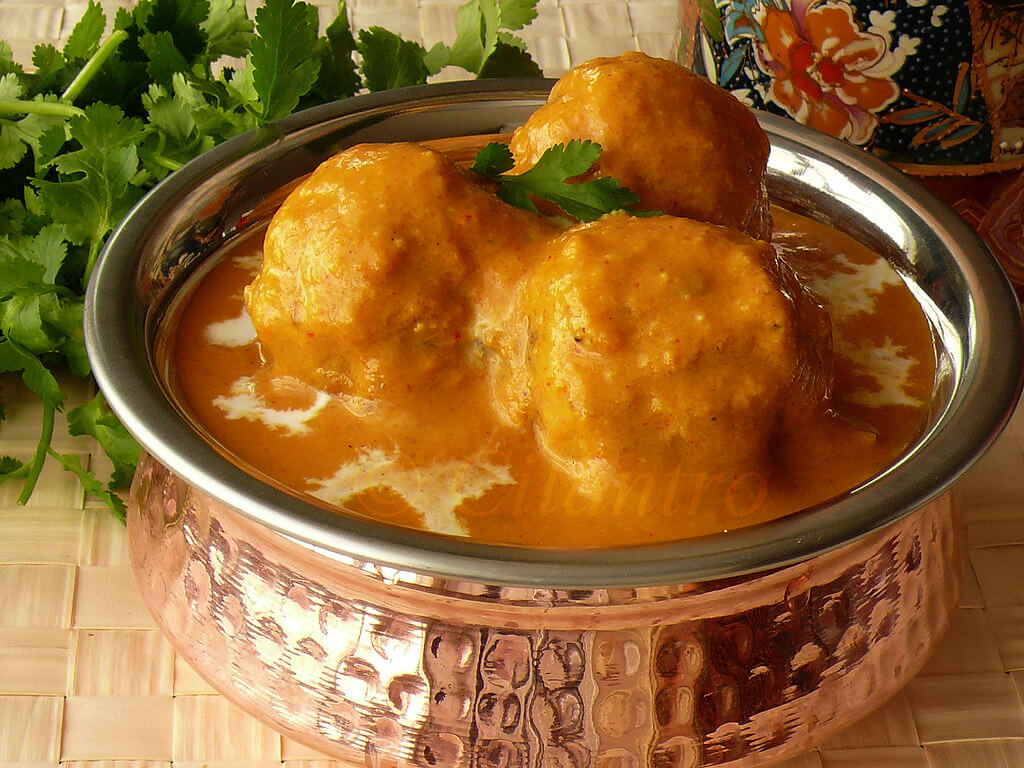
Seekh Kebab: Seekh Kebab is a popular grilled dish made from seasoned minced meat, typically beef, lamb, or chicken, mixed with spices like cumin, coriander, and chili powder. The meat mixture is molded onto skewers and grilled until charred and cooked through, resulting in succulent and smoky-flavored kebabs often served with naan and chutney.
Bihari Boti: Bihari Boti is a flavorful meat dish originating from the region of Bihar in India but widely popular in Pakistan as well. It consists of marinated pieces of meat, usually beef or mutton, in a blend of yogurt, papaya paste, and various spices such as garam masala, ginger, and garlic. The marinated meat is then skewered and grilled to perfection, offering tender and spicy bites.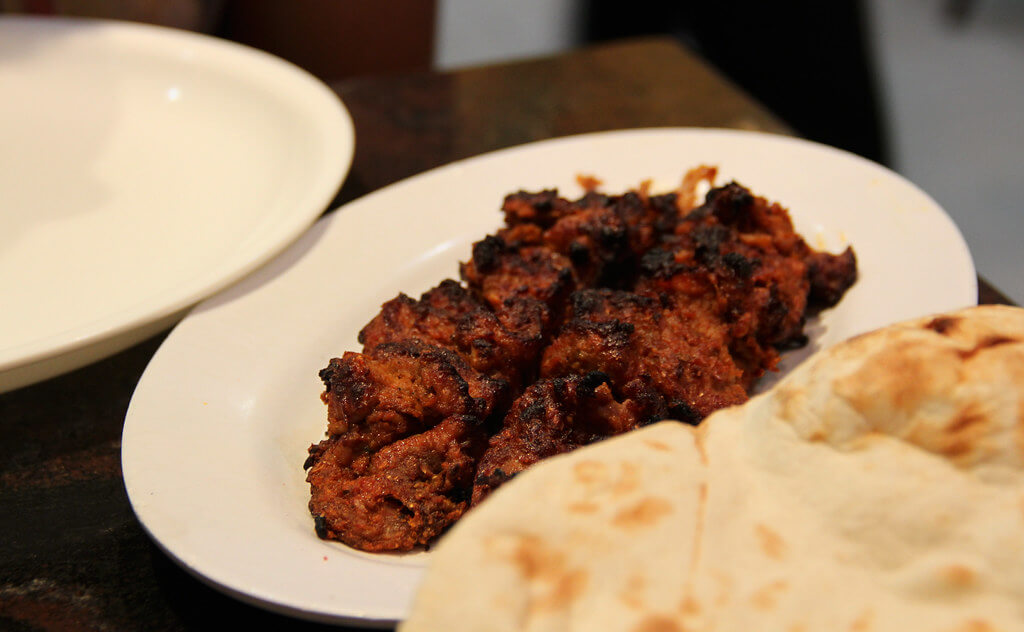
Aloo Palak: Aloo Palak is a comforting and nutritious vegetarian dish made with spinach (palak) and potatoes (aloo). The spinach is cooked with spices like cumin, turmeric, and red chili powder, along with diced potatoes, resulting in a flavorful and mildly spicy dish rich in iron and essential nutrients.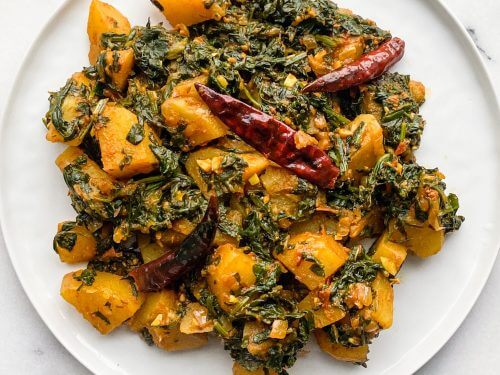
Fish Curry: Fish Curry is a flavorful dish made with fish fillets cooked in a spiced gravy prepared with tomatoes, onions, garlic, ginger, and a blend of aromatic spices. The fish is simmered gently in the gravy, allowing it to absorb the flavors, resulting in a tangy and savory dish often enjoyed with steamed rice or naan.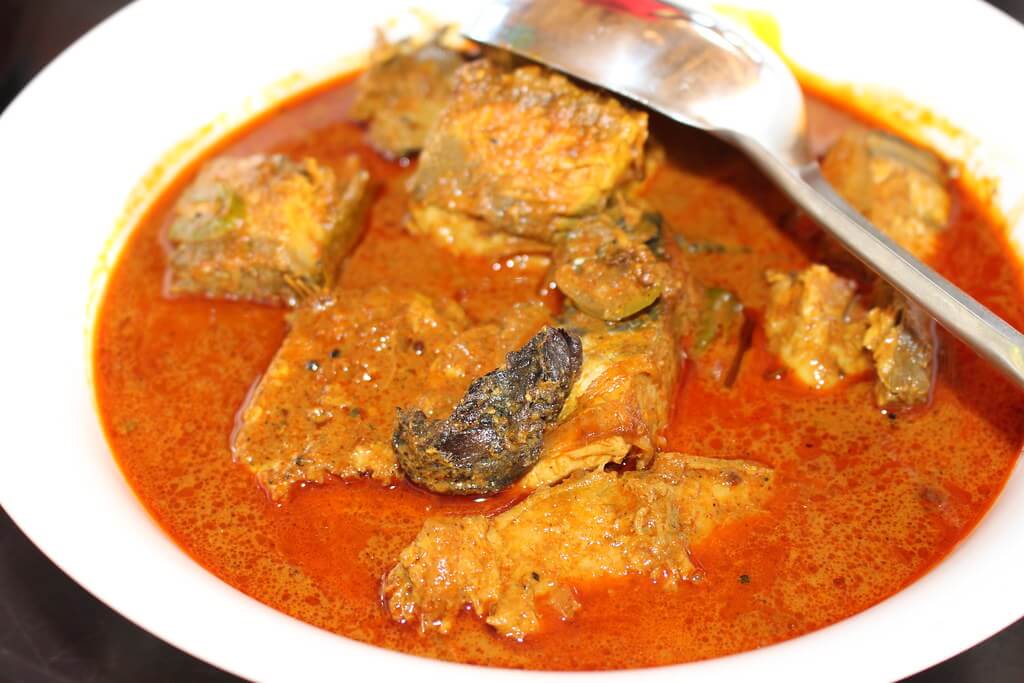
Mutton Pulao: Mutton Pulao is a fragrant and aromatic rice dish cooked with tender pieces of mutton, basmati rice, and a blend of spices such as cardamom, cloves, cinnamon, and bay leaves. The mutton is marinated with spices and yogurt, imparting a rich flavor to the rice as it cooks together, creating a delicious one-pot meal.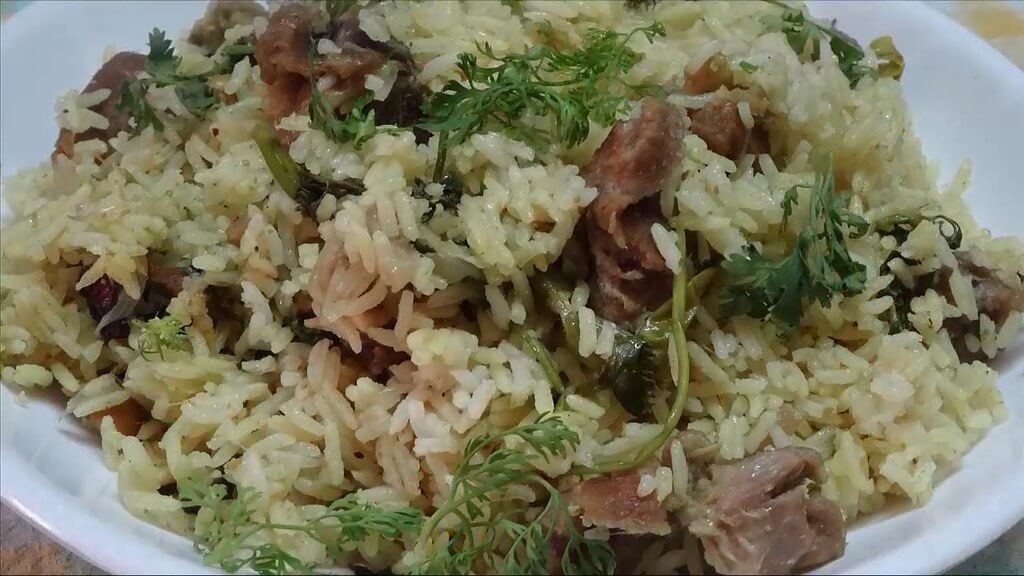
Aloo Paratha: Aloo Paratha is a popular North Indian and Pakistani stuffed flatbread made with whole wheat flour and a filling of mashed potatoes mixed with spices like cumin, coriander, and green chilies. The paratha is rolled out, filled with the potato mixture, and cooked on a griddle with ghee or oil until golden and crispy, often served with yogurt or pickles.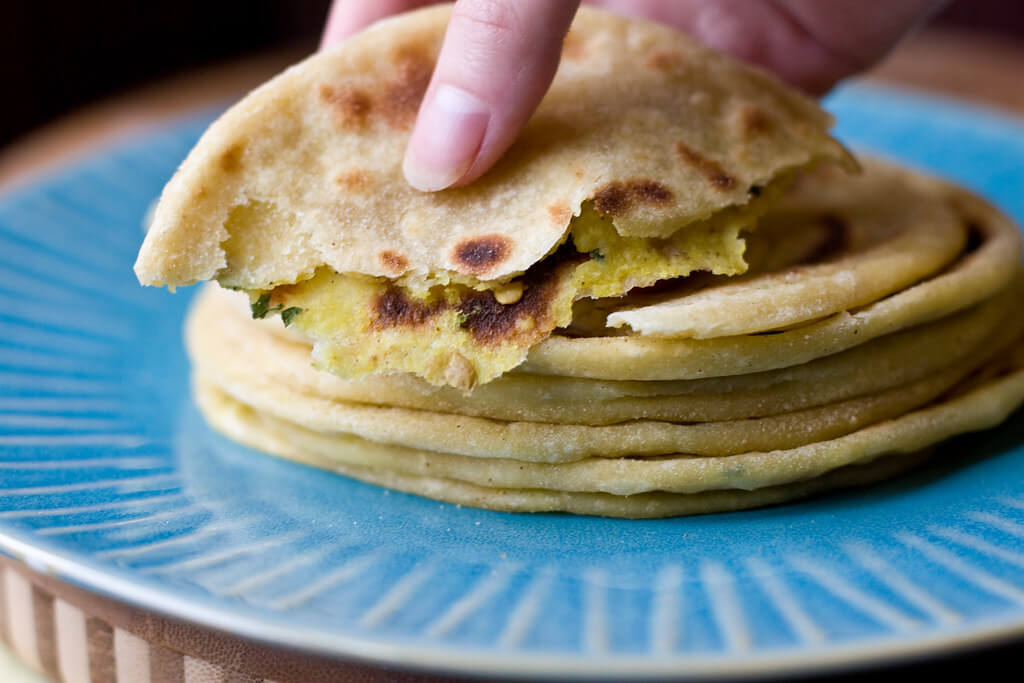
Baida Roti: Baida Roti is a stuffed bread dish made by stuffing minced meat, usually chicken or mutton, along with beaten eggs and spices, between layers of thin dough. The stuffed dough is then folded and cooked on a griddle until it becomes crispy and golden brown, offering a delightful blend of flavors and textures.
Chicken Shawarma: Chicken Shawarma is a Middle Eastern-inspired dish consisting of thinly sliced marinated chicken stacked in a vertical rotisserie and slow-roasted. The roasted chicken is shaved off the rotisserie and wrapped in pita bread with a spread of garlic sauce, tahini, vegetables, and pickles, creating a flavorful and satisfying wrap.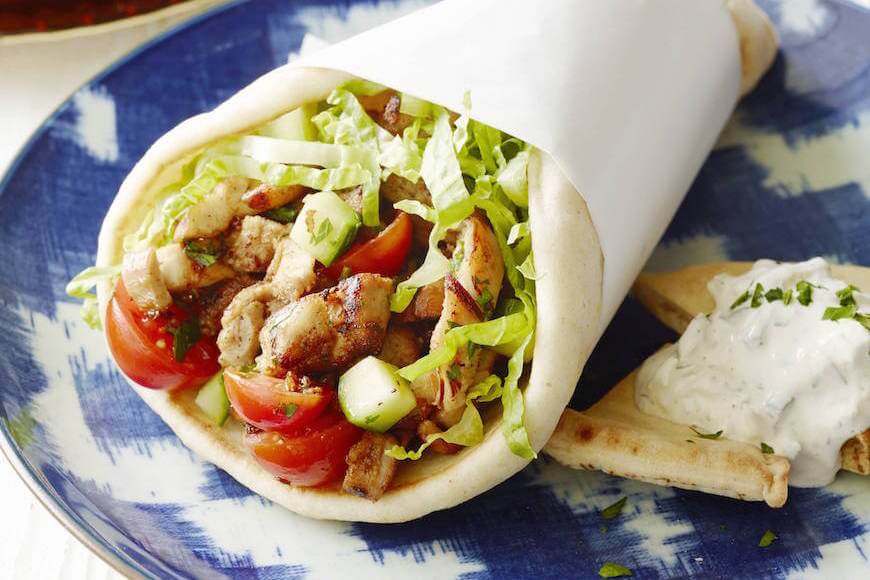
Mutton Karahi: Mutton Karahi is a spicy and aromatic meat dish prepared in a karahi (a type of cooking vessel) with tender mutton pieces, tomatoes, onions, garlic, ginger, and a medley of spices such as coriander, cumin, and red chili powder. The dish is cooked on high heat, resulting in a rich and flavorsome gravy that complements the tender meat.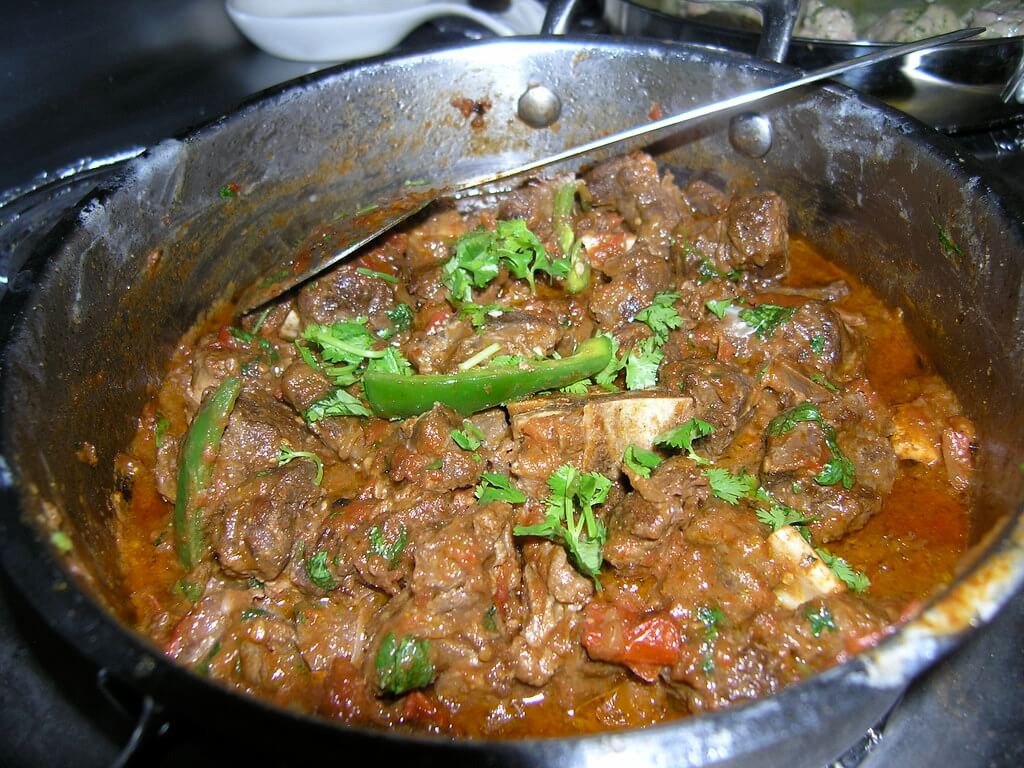
Chicken Handi: Chicken Handi is a creamy and indulgent chicken curry cooked in a handi (a deep, wide-mouthed cooking pot) with bone-in chicken pieces, yogurt, tomatoes, onions, and a blend of spices such as garam masala, turmeric, and coriander. The dish is simmered until the chicken becomes tender and is often garnished with fresh cilantro before serving.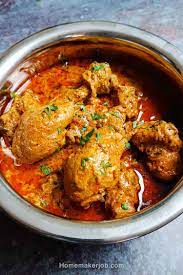
Sindhi Kadhi: Sindhi Kadhi is a tangy and spicy yogurt-based curry made with gram flour, assorted vegetables like okra, potatoes, and drumsticks, and a blend of spices. The curry is tempered with fenugreek seeds, cumin seeds, and curry leaves, resulting in a flavorful and comforting dish that pairs well with rice or roti.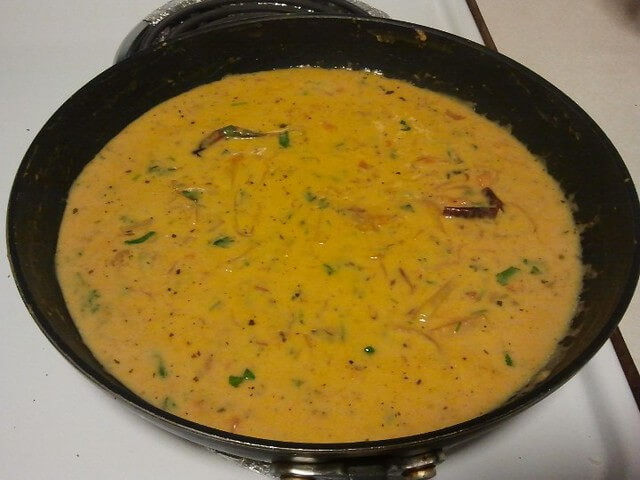
Achar Gosht: Achar Gosht is a savory meat dish cooked with tender pieces of mutton or beef in a spicy and tangy gravy flavored with pickling spices. The dish gets its name from the distinct taste resembling the flavors of pickles (achar). It’s prepared with spices like mustard seeds, fenugreek seeds, fennel seeds, and tangy elements like vinegar or tamarind, creating a bold and appetizing dish.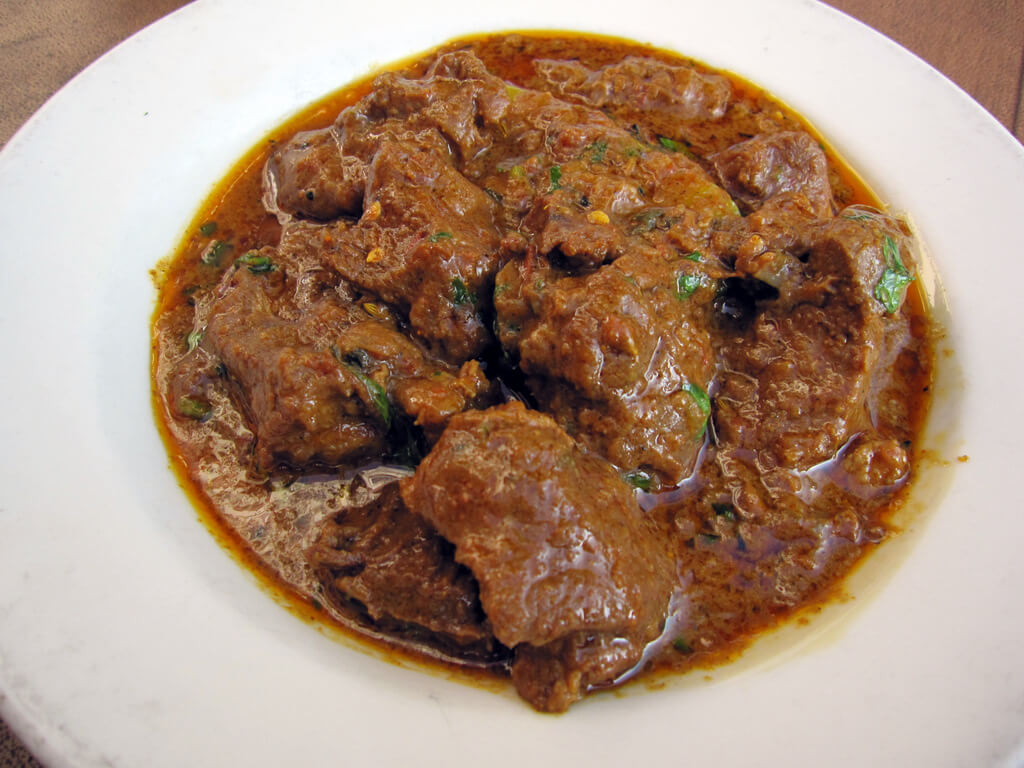
History and Culture
Culinary History
The culinary journey of food in Hyderabad, Pakistan, can be traced back through centuries, reflecting a fascinating amalgamation of diverse cultural influences that have shaped its distinctive cuisine. Rooted in the historical tapestry of the region, Hyderabad’s culinary heritage boasts a rich blend of flavors influenced by Mughal, Persian, and indigenous Sindhi traditions.
Tracing Historical Roots The genesis of Hyderabad’s cuisine can be attributed to the culinary exchanges that flourished during the Mughal Empire. The Mughals, known for their refined tastes and love for lavish feasts, introduced a myriad of aromatic spices, intricate cooking techniques, and royal recipes that left an indelible mark on the local food culture. Additionally, the Persian influences brought by traders and settlers further enriched the flavors of Hyderabad’s gastronomy, adding layers of complexity and sophistication to its dishes.
Fusion of Influences The fusion of these external influences with the local Sindhi cuisine created a unique culinary identity for Hyderabad. The city’s cuisine became an exquisite blend of aromatic spices, slow-cooking methods, and a harmonious balance of flavors, creating a culinary legacy that transcends time.
Cultural Significance
Food in Hyderabad holds a profound cultural significance, weaving its way into the fabric of traditions, celebrations, and daily life. It serves as a vital cornerstone in social interactions, bonding families and communities through shared meals and cherished recipes passed down through generations.
Role in Traditions and Celebrations The significance of food in Hyderabad transcends mere sustenance; it symbolizes hospitality, love, and celebration. Traditional dishes play an integral role in festive occasions, such as weddings, religious festivals like Eid, and other cultural celebrations. These gatherings are marked by an elaborate spread of traditional delicacies, fostering a sense of togetherness and cultural pride.
Importance in Social Gatherings Food in Hyderabad serves as a catalyst for social gatherings, acting as a unifying element that brings people together. Whether it’s a casual gathering or a formal event, sharing a meal is deeply ingrained in the social fabric of the city, facilitating conversations, strengthening bonds, and nurturing relationships.
Culinary Traditions
The culinary traditions of Hyderabad are steeped in time-honored practices, encompassing a blend of traditional cooking methods, utensils, and recipes that have withstood the test of time.
Traditional Cooking Methods and Utensils The city’s culinary landscape is characterized by traditional cooking methods such as dum cooking (slow cooking), tandoori cooking (clay oven), and the use of brass or copper utensils. These methods and utensils impart unique flavors and textures to the dishes, preserving the authenticity of Hyderabad’s cuisine.
Evolution of Recipes Over generations, the recipes in Hyderabad have been meticulously preserved and passed down, ensuring that the essence of traditional flavors remains intact. While embracing modern influences, the city has successfully retained the authenticity of its culinary heritage, allowing each dish to tell a story of its historical roots and cultural significance.
Tips and Tricks
Embarking on a culinary adventure in Hyderabad, Pakistan, offers a delightful journey through its diverse flavors and aromatic dishes. Whether you’re exploring the bustling streets or trying your hand at recreating traditional recipes at home, here are some insightful tips and essential guidance to make the most of your food experience in this vibrant city.
Exploring Restaurants
To savor the authentic essence of food in Hyderabad, delve into its renowned eateries and embrace the vibrant street food scene that dots the city. Here are some tips to guide your gastronomic exploration:
Authentic Hyderabad Cuisine Seek out local eateries and restaurants that specialize in authentic Hyderabad cuisine. Look for places that serve iconic dishes like Sindhi Biryani, Chapli Kebab, and Saji. Restaurants nestled in the old city area often boast traditional flavors and recipes passed down through generations, offering an immersive experience into the city’s culinary heritage.
Street Food Delights Venture into the bustling streets adorned with vibrant stalls offering an array of street food delicacies. Explore popular food hubs like Shahi Bazaar and Resham Gali, where you can relish flavorsome snacks such as Bun Kabab, Gol Gappay, and Kachori. Embrace the lively ambiance and indulge in the local street fare to truly grasp the spirit of Hyderabad’s food scene.
Cooking at Home
For those inclined to recreate the flavors of Hyderabad’s cuisine in their own kitchens, here’s a step-by-step guide to preparing a traditional dish:
Traditional Dish Preparation Choose a quintessential Hyderabad dish, such as Sindhi Biryani or Aloo Palak, to cook at home. Recipes for these dishes are often available online or in cookbooks specializing in Pakistani cuisine. Follow the step-by-step instructions carefully to ensure an authentic taste.
Ingredients
Spice Mixes and Blends
Spices play a pivotal role in defining the rich and aromatic flavors of food in Hyderabad. Understanding the essential spice blends used in the cuisine is crucial:
Essential Spices Hyderabadi cuisine embraces a variety of spices, including cumin, coriander, red chili powder, turmeric, and cloves. These spices are skillfully blended to create distinct flavor profiles in dishes like Biryani, Kebabs, and Curries.
Unique Spice Blends Exploring unique spice blends like Biryani masala, Garam masala, and Chaat masala unveils the intricate combinations that elevate the taste of Hyderabad’s signature dishes. Each blend is meticulously crafted to impart depth and aroma, contributing to the city’s culinary allure.
Local Produce and Ingredients
The essence of Hyderabad’s cuisine lies in the use of indigenous and locally sourced ingredients:
Indigenous Ingredients Celebrate the local flavors by incorporating indigenous ingredients like saag (greens), karela (bitter gourd), and fresh herbs like mint and coriander. These ingredients not only add authenticity but also contribute to the nutritional richness of the dishes.
Importance of Locally Sourced Ingredients Hyderabad’s traditional recipes often emphasize the use of locally grown produce, contributing to the freshness and authenticity of the cuisine. Supporting local markets and sourcing ingredients directly from farmers not only preserves culinary traditions but also promotes sustainability in food sourcing.
Sustainability and Local Sourcing
In the vibrant culinary landscape of Hyderabad, Pakistan, a growing emphasis on sustainability and local sourcing is reshaping the way food is cultivated, prepared, and savored. Recognizing the intrinsic value of locally sourced ingredients and sustainable practices has become integral to preserving the authenticity of food in Hyderabad while fostering a deeper connection with the region’s culinary heritage.
Emphasis on Locally-Sourced Ingredients
Significance of Local Produce The use of locally produced ingredients holds immense significance in shaping the flavors and authenticity of food in Hyderabad. Locally sourced vegetables, spices, and meats not only contribute to the distinct taste but also promote the region’s agricultural diversity. Ingredients like fresh saag (greens), and aromatic spices cultivated in the Sindh region infuse dishes with flavors unique to Hyderabad.
Supporting Local Farmers Restaurants in Hyderabad increasingly recognize the importance of supporting local farmers and artisans. Many eateries actively engage in direct partnerships with farmers, procuring fresh produce directly from local markets or collaborating with agricultural cooperatives. By fostering such relationships, restaurants not only ensure quality ingredients but also contribute to the economic well-being of local farming communities.
Sustainable Practices
Prioritizing Sustainability Certain restaurants and markets in Hyderabad place a premium on sustainability in their sourcing practices. They prioritize procuring ingredients that are grown or produced using eco-friendly methods, including organic farming techniques and ethical animal husbandry practices. By promoting these sustainable initiatives, they aim to reduce their environmental footprint while offering patrons ethically sourced food options.
Preserving Culinary Traditions Sustainable practices play a vital role in preserving the culinary traditions of Hyderabad. By sourcing ingredients sustainably, these establishments uphold the integrity of traditional recipes, ensuring that the flavors and techniques passed down through generations remain unaltered. Moreover, embracing sustainable practices aligns with the ethos of respecting nature’s bounty, an essential aspect of Hyderabad’s food culture.
As the food scene in Hyderabad continues to evolve, the shift towards sustainability and local sourcing stands as a testament to the city’s commitment to preserving its culinary heritage. Through these initiatives, Hyderabad celebrates not just the richness of its flavors but also its responsibility towards the environment and the communities that contribute to its gastronomic tapestry.
Pairings and Recommendations
Pairing the delectable dishes of Hyderabad, Pakistan, with the right beverages can elevate your dining experience, creating harmonious flavor combinations that tantalize the taste buds. Additionally, exploring diverse regional delicacies beyond the main dishes offers a comprehensive glimpse into the city’s rich culinary tapestry.
Beverage Pairings
Complementing Hyderabad’s Dishes When relishing the robust flavors of food in Hyderabad, consider pairing them with suitable beverages:
Lassi The creamy and refreshing yogurt-based drink, Lassi, serves as an excellent accompaniment to spicy dishes like Chicken Karahi or Chapli Kebab. Its cooling effect helps balance the heat of the spices, enhancing the overall dining experience.
Rooh Afza This quintessential rose-flavored syrup mixed with water or milk complements the rich and aromatic flavors of Hyderabad’s biryanis and kebabs. Its sweet floral notes provide a delightful contrast to the savory dishes.
Local Teas Hyderabad boasts a diverse range of teas, from spiced chai to soothing herbal infusions. Pairing these teas with snacks like Bun Kabab or Gol Gappay amplifies the culinary journey, offering a fusion of flavors.
Additional Recommendations
Regional Delicacies While exploring food in Hyderabad, venture beyond the main dishes to discover diverse regional delicacies:
Sohan Halwa Indulge in the rich and flavorful Sohan Halwa, a traditional sweet made with wheat, sugar, ghee, and nuts. This delicacy, often associated with festive celebrations, showcases the city’s sweet culinary heritage.
Khagina Savor Khagina is a simple yet flavorsome dish made from scrambled eggs cooked with onions, tomatoes, and spices. It serves as a hearty breakfast option or a delightful side dish, providing a glimpse into the city’s breakfast culture.
Sindhi Kadhi Don’t miss the tangy and aromatic Sindhi Kadhi, a savory yogurt-based curry packed with assorted vegetables. Its distinctive flavors offer a delightful contrast to the spicier dishes, presenting a unique gastronomic experience.
Exploring these diverse regional delicacies alongside the main dishes of Hyderabad allows for a complete culinary immersion, unveiling the city’s culinary diversity and adding layers of flavor to your dining journey.
Cultural Significance
Food in Hyderabad is not merely sustenance; it is an integral element woven intricately into the cultural fabric of the region. It transcends the realms of taste and nourishment, playing a pivotal role in reflecting the values, traditions, and beliefs of the people who call this vibrant city home.
Culinary Traditions as Cultural Expressions
Communal Bonds and Hospitality In the cultural tapestry of Hyderabad, food serves as a unifying force, fostering communal bonds and strengthening social connections. The act of sharing meals embodies the ethos of hospitality ingrained in the city’s culture. Whether at home or in local eateries, inviting someone to share a meal is a gesture of warmth and generosity, showcasing the importance of togetherness.
Preservation of Heritage Food in Hyderabad acts as a conduit for preserving cultural heritage and passing down traditions through generations. Recipes and cooking techniques are revered treasures, safeguarded, and shared to maintain the authenticity of regional flavors. Each dish served carries the legacy of centuries-old traditions, connecting the present to the past and preserving the essence of the city’s culinary history.
Food Reflecting Values and Beliefs
Celebration and Festivities The preparation and sharing of food in Hyderabad are intricately intertwined with celebrations and festivals. Special occasions like weddings, religious festivities, and family gatherings are marked by an elaborate spread of traditional delicacies. The act of cooking and serving these dishes symbolizes respect for customs and rituals, emphasizing the value of family, unity, and joyous festivities.
Cultural Diversity and Inclusivity The diversity of dishes and flavors found in Hyderabad’s culinary landscape mirrors the city’s cultural diversity. It reflects the openness and inclusivity of the community, showcasing influences from various cultural backgrounds. Food acts as a bridge, bringing together people from different walks of life, and fostering a sense of unity amidst diversity.
Values Embedded in Food Practices
Respect for Nature and Tradition The reverence for nature and tradition is deeply embedded in the preparation of food in Hyderabad. The use of locally sourced ingredients and sustainable practices underscores respect for nature’s bounty and the ancestral knowledge passed down through generations. These practices honor the interconnectedness of food, culture, and the environment.
Nurturing Relationships Food in Hyderabad is a medium for nurturing relationships and expressing care and affection. The preparation of meals, often involving intricate recipes and time-honored techniques, signifies the investment of time and effort, symbolizing love and respect for family and friends.
In essence, food in Hyderabad transcends the act of eating; it is a cultural narrative, a symbol of identity, and a testament to the values and beliefs deeply ingrained in the hearts and kitchens of the people. It represents a collective heritage, a shared celebration, and an expression of the city’s vibrant cultural mosaic.
Conclusion
In conclusion, the food in Hyderabad, Pakistan, stands as a vibrant testament to the rich tapestry of flavors, cultural heritage, and culinary diversity that define this enchanting city. Embracing influences from Mughal, Persian, and local Sindhi cuisines, Hyderabad’s culinary landscape offers an exquisite array of dishes, each bearing the imprint of centuries-old traditions and unique regional techniques.
The food in Hyderabad, Pakistan, exudes a tantalizing fusion of aromas, textures, and tastes, creating an immersive culinary experience that beckons explorers and food enthusiasts alike. From the aromatic indulgence of Sindhi Biryani to the fiery allure of Chapli Kebab, every dish encapsulates a narrative of history, culture, and community, enticing palates with its distinctiveness.
The vibrant street food culture, with its bustling markets and savory delights like Saji and Bun Kabab, embodies the spirit of the city’s gastronomic journey. These delectable offerings, amidst the captivating chaos of the streets, provide an authentic glimpse into the soul of food in Hyderabad—a fusion of tradition, innovation, and sheer culinary brilliance.
Exploring the diverse flavors and culinary treasures of Hyderabad is not merely a gastronomic adventure; it’s an immersion into the heart of a city steeped in culinary artistry. The city’s commitment to locally sourced ingredients, sustainable practices, and the preservation of age-old recipes showcases its dedication to both heritage and innovation in the realm of food.
As visitors and locals alike traverse the lanes adorned with the aroma of spices and the sizzle of grills, the invitation to savor and relish the food in Hyderabad resonates fervently. Each bite is an invitation to embrace the cultural legacy, where every dish is a celebration of tradition, every flavor a tribute to history, and every meal a communion of tastes that transcends time.
In essence, food in Hyderabad, Pakistan, transcends mere sustenance; it is a vibrant mosaic of flavors that invites, entices, and captivates. So, whether wandering the streets or dining in acclaimed eateries, let the diversity and richness of Hyderabad’s cuisine be an exploration, a celebration, and a tribute to the city’s extraordinary culinary heritage—immerse, indulge, and savor the unparalleled delights that this gastronomic gem has to offer.

